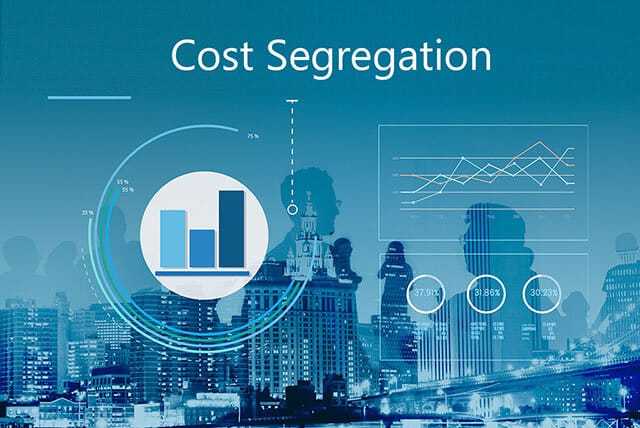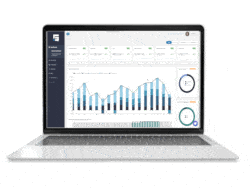If you had a tax refund coming, would you tell the IRS to keep it for 39 years?
For many commercial building owners, that’s exactly what they’re doing. In fact, the majority of owners are missing opportunities and overpaying on their income tax.
What is cost segregation?
Cost Segregation is an in-depth analysis of specialized incentives for commercial property owners that effectively lowers taxable income. Using cost segregation, certain costs can be classified as short life assets (tangible personal property or land improvements). As a result, with these classifications, these same costs can be depreciated at an accelerated rate of 5, 7 or 15-year depreciation terms.
Tangible personal property (non-structural elements) includes equipment, machinery, removable walls, fixtures, furniture, wall-coverings, window treatments, carpet, and accent lighting to name a few. These elements are eligible for a 5 to 7 year accelerated depreciation schedule.
Land improvements have a 15 year accelerated depreciation schedule and include fencing, outdoor lighting, sidewalks, parking lots, docks, or other landscaping improvements. That is to say, rather than waiting 39 or 27.5 years to depreciate, land improvements are depreciated over 15 years. Golf course owners, in particular, make great use of this strategy.
For the buildings themselves, commercial buildings (non-residential) depreciate on a straight line schedule over 39 years. Similarly, residential/multifamily buildings depreciate on a straight line schedule over 27 ½ years.
The Internal Revenue Service (IRS) recommends building owners have an engineering-based feasibility study done to determine what portion of their building(s) can accelerate the depreciation. These studies are a combination of accounting and engineering techniques. Specific information about cost segregation can be located in the IRS Audit Technique Guide.
Who qualifies for this benefit?
Any commercial or multifamily building purchased, constructed, or renovated in the past 20 years (since December 31, 1986) valued at over $500,000 make good candidates for the study. However, the benefit varies greatly depending on when the building was put into service and the number of updates made to that building and the land during that time. Specifically, look-back studies are allowed back to January 1, 1987.
A cost segregation study can be conducted for any previous tax year without amending that year’s tax return.
How much can a commercial property owner receive?
In fact, the average tax savings is $75,000 for every $1,0000,000 purchase price, construction cost, and renovation costs. And, this study must be conducted with the bigger customer tax picture in mind for the owner so the owner can get the greatest benefit of this study. Notably, the tax law change in 2017 limits the losses for some owners starting in 2018.
Cost segregation study benefits to owners include:
- Increased cash flow
- Minimize current taxes
- Catch up benefit without amending returns
- Free up money for new investments or new hires
Additional key points for considering a cost segregation study:
- Increased depreciation leads to paying taxes at the capital gains rate as opposed to an ordinary income rate.
- The principal of the time value of money comes into play. Simply put, a dollar today is worth more today than a dollar in the future.
- Above all, now is not too late. IRS Code 481 allows an owner to capture their entire missed benefit immediately.
What’s the number one myth about cost segregation?
The number one myth about cost segregation is you can only do cost segregation on a new building or new renovation. Not true. In fact, the first sentence in the IRS Cost Segregation Audit Techniques Guide – Chapter 6.2 states:
“A taxpayer may conduct a cost segregation study on
used property and then recapture deductions for prior years.”
Why doesn’t every real estate owner and CPA know this?
For many CPA’s or real estate owners, it is simply not their area of expertise. Therefore opportunities are missed. But, this does not have to be the reason for you to miss out on this powerful tax savings strategy.
Just imagine, what would/could you do with an increase in cash flow of hundreds of thousands of dollars?
What are the next steps if I want a Cost Segregation study?
First, start by contacting a company experienced and qualified to conduct a cost segregation study. And, most firms will actually offer a free initial qualifying discussion. That way you can be sure it makes sense to move forward with a study. In short, if the initial assessment shows it will be difficult to recoup the cost of the survey, they will likely recommend not proceeding.
On the other hand, if the initial assessment is positive, then a qualified engineer will inspect the property. Subsequently, they will provide an estimated value for all the building and land components. After that, they will provide information on the tax classification for those same components. Finally, in the end, a report will be provided that you can share with your tax accountant. In fact, many owners use some component of accelerated depreciation every year to reduce their taxable income.
To learn more, you can view our webinar Learn About Cost Segregation.
In conclusion, cost segregation is indeed a frequently overlooked tax incentive. So, why not make the time to learn more on this topic. See if it makes sense for you to conduct a cost segregation study on your property.

Bob Rothenbuehler brings over 25 years of purchasing, sales and operational experience to the table. Additionally, he has 20 years of involvement with various financial services functions. Bob identifies a variety of potential savings opportunities for prospects as well as long-term clients and then assists them with the implementation for improved profitability and cash flow. Go to www.PropertyTaxCredits.com/104883 to receive an immediate estimate of your potential savings.




